Today is the twenty-ninth of February, a bonus day to even up calendar discrepancies which allows me (just) to squeeze in another newsletter this month. The idea of a leap year was first introduced in the dramatic reforms to the calendar wrought during the dictatorship of Julius Caesar and tweaked during the reign of his adoptive son, Rome’s first emperor, Augustus.

It was determined that there weren’t exactly three hundred and sixty-five days in a year, and that to add a quarter of a day each year should resolve the problem. And so every four years a full day was added to the shortest month. The difficulty, it transpired, was that an extra quarter of a day each year wasn’t very precise. The Julian Calendar gives an average of 365.25 days per year, whereas the solar value is ever so slightly less (current calculations—the figure varies slightly—say 365.242). This means the Julian Calendar gains approximately one day every one hundred and twenty-nine years.
Over the course of fifteen centuries the extra few minutes here and there had accumulated and the observable points of the calendar—the equinoxes and the solstices—were significantly out of kilter. For the Roman Church this was particularly concerning for the impact it had on the calculation of the moveable feast of Easter. In the late sixteenth century Pope Gregory XIII’s chief objective was to return the vernal equinox to the 21 March. This was approximately where it had been during the fourth century Council of Nicea which had, inter alia, established a uniform calculation of the date of Easter as the first Sunday after the first full moon on or after the vernal equinox.
By early 1582 Pope Gregory’s astronomers had concluded their studies in the Tower of the Winds in the Vatican Palaces and on 24 February the papal bull Inter gravissimas decreed a reform of the calendar. A solution had been reached: ten days were to be skipped to set the calendar back on an even keel, and to keep a steady course a tweak to the Julian calendar was made. Thus every four years is a leap year, unless the year is divisible by a hundred when it isn’t, unless divisible by four hundred when it is: two thousand, the only turn of the century any of us have lived through, was a leap year but nineteen hundred wasn’t.
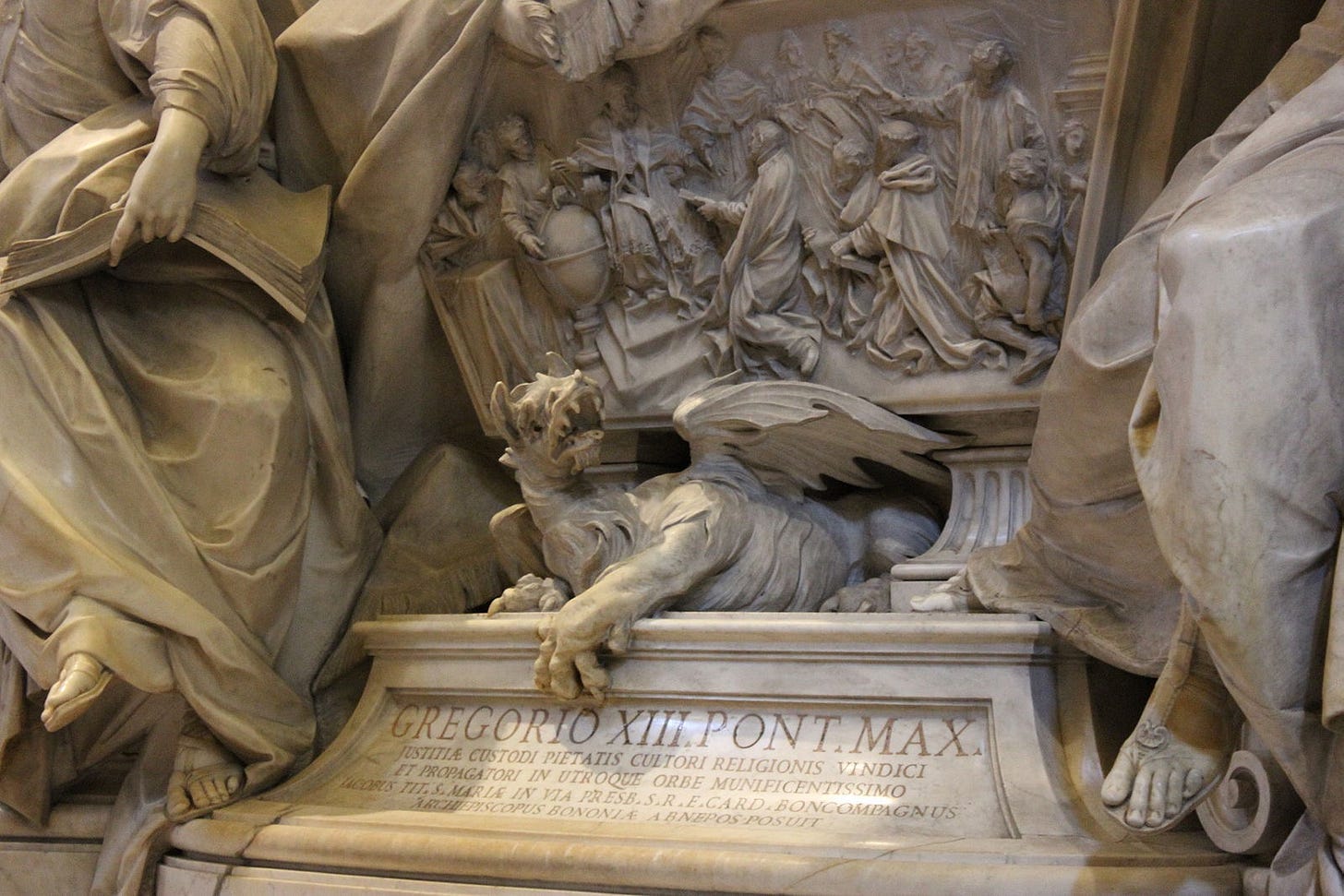
The Gregorian Calendar which we follow today was, however, not universally accepted: even Philip II of vehemently Catholic Spain took six months to fall into step. To do so was, after all, to admit papal supremacy and among those countries which resisted was England. When Gregory sat on the throne of Peter, England was ruled by Elizabeth who was certainly not going to follow papal stipulations. It was only in 1752, almost two centuries later, that the United Kingdom and the British Empire (then including the eastern part of what is now the United States) finally accepted the Gregorian Calendar and acknowledged that the Pope had had a point.
Today when visiting the Vatican Museums one is channeled along the spectacular Gallery of the Maps. The hall, one hundred and twenty metres long, is lined with extremely accurate (for the period) maps of the Italian peninsula and its surrounding islands. Additional territories represented include Malta, the region of Avignon, and a representation of the battle of Lepanto. Barely ten years before the maps were begun Catholic Europe had set aside her differences to unite against a common enemy, the Ottoman Empire. The Gallery is an advertisement of strength, a flexing of papal muscles as the triumph at Lepanto heralded an unapologetic return of confidence almost seven decades after the Protestant Reformation had begun. The hallway offers a first glimpse of what would become the Roman Baroque.
As we enter the gallery nowadays, amid the exhortations of the museum guards not to stop in the doorway, every day thousands of visitors pass under the tower where Gregory’s astronomers did their sums and looked through their telescopes as they sought to reform the calendar which punctuates our lives. The message of the hall was that the Roman Church controlled not just land but also Time.

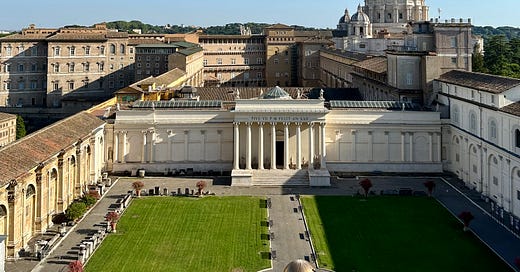


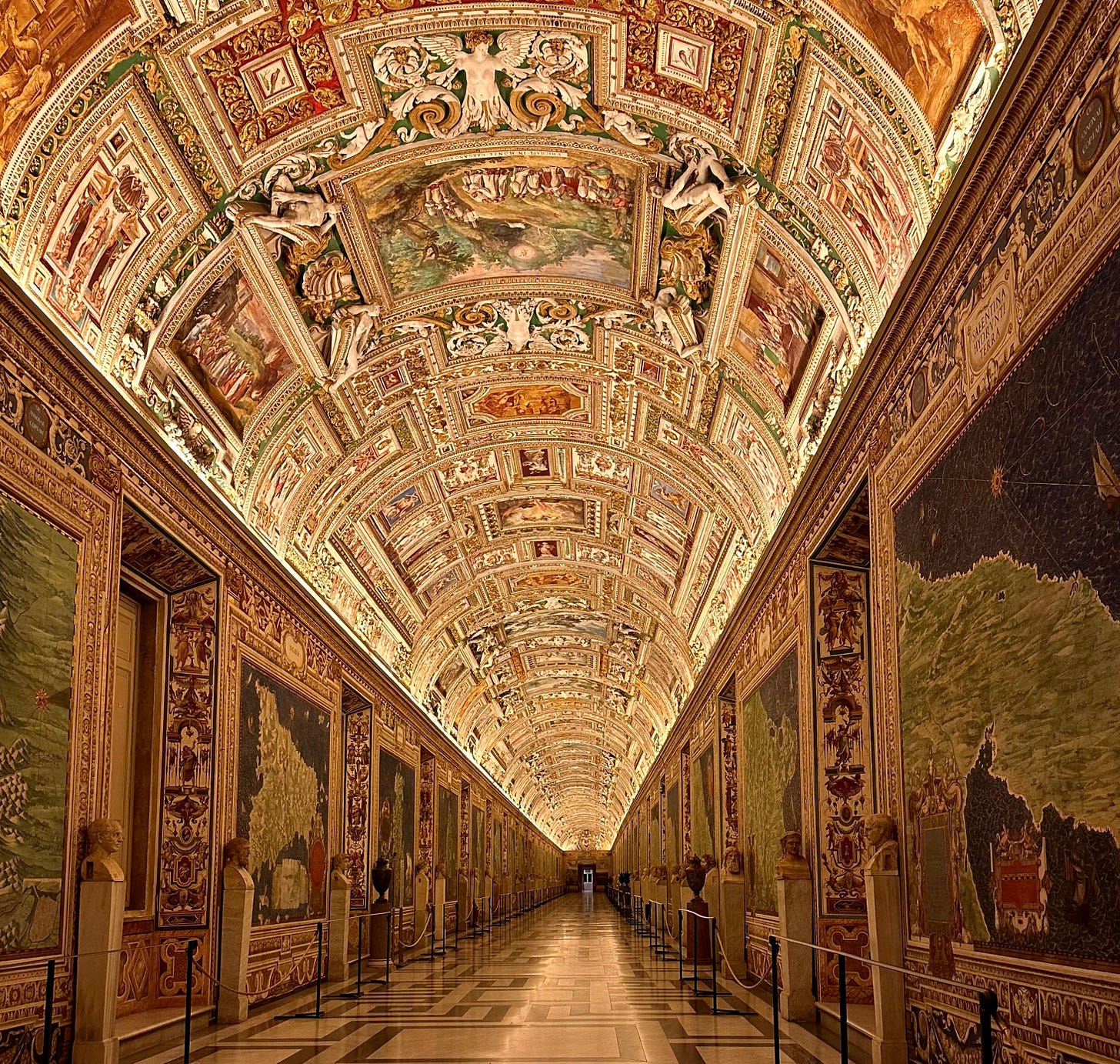
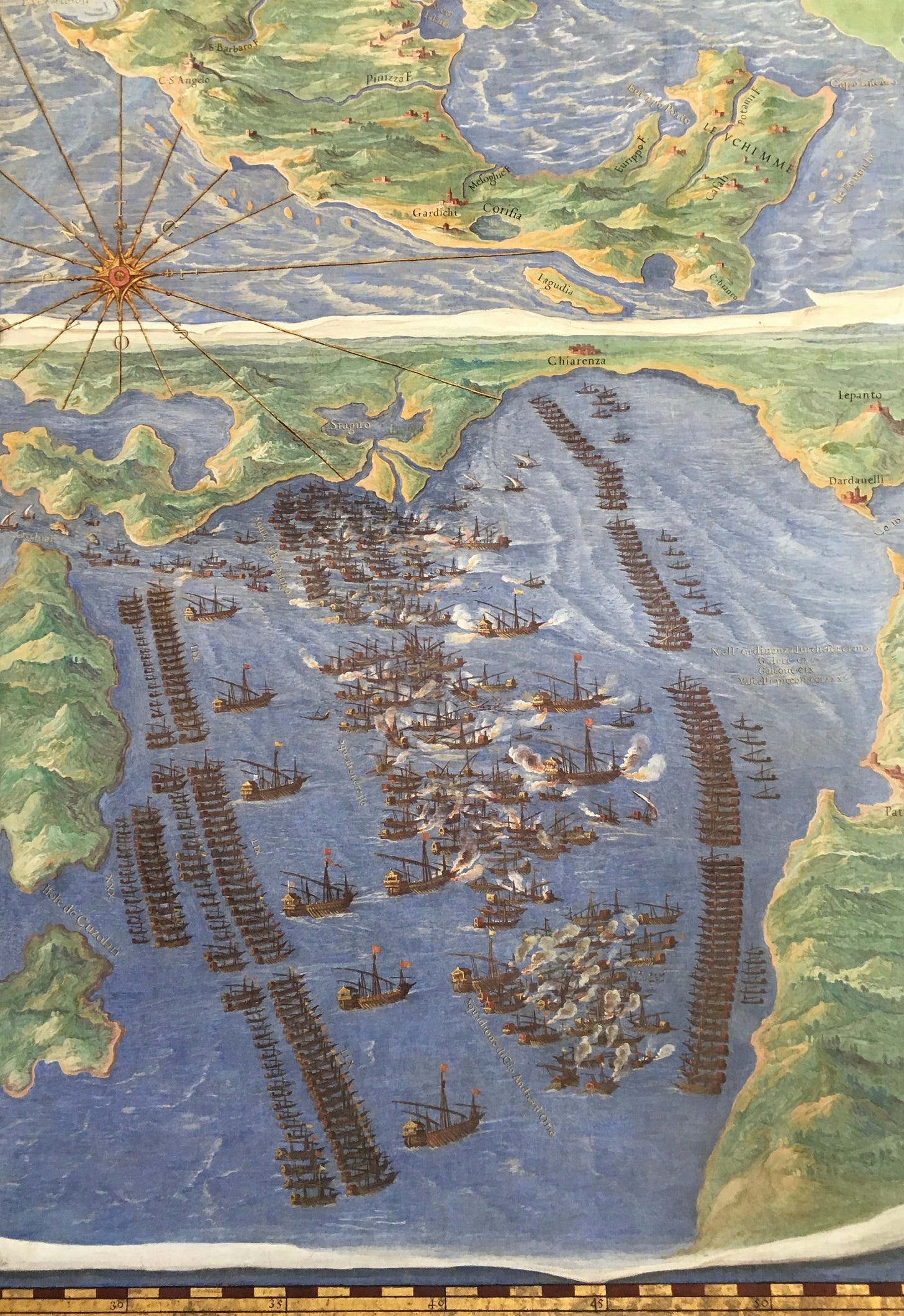
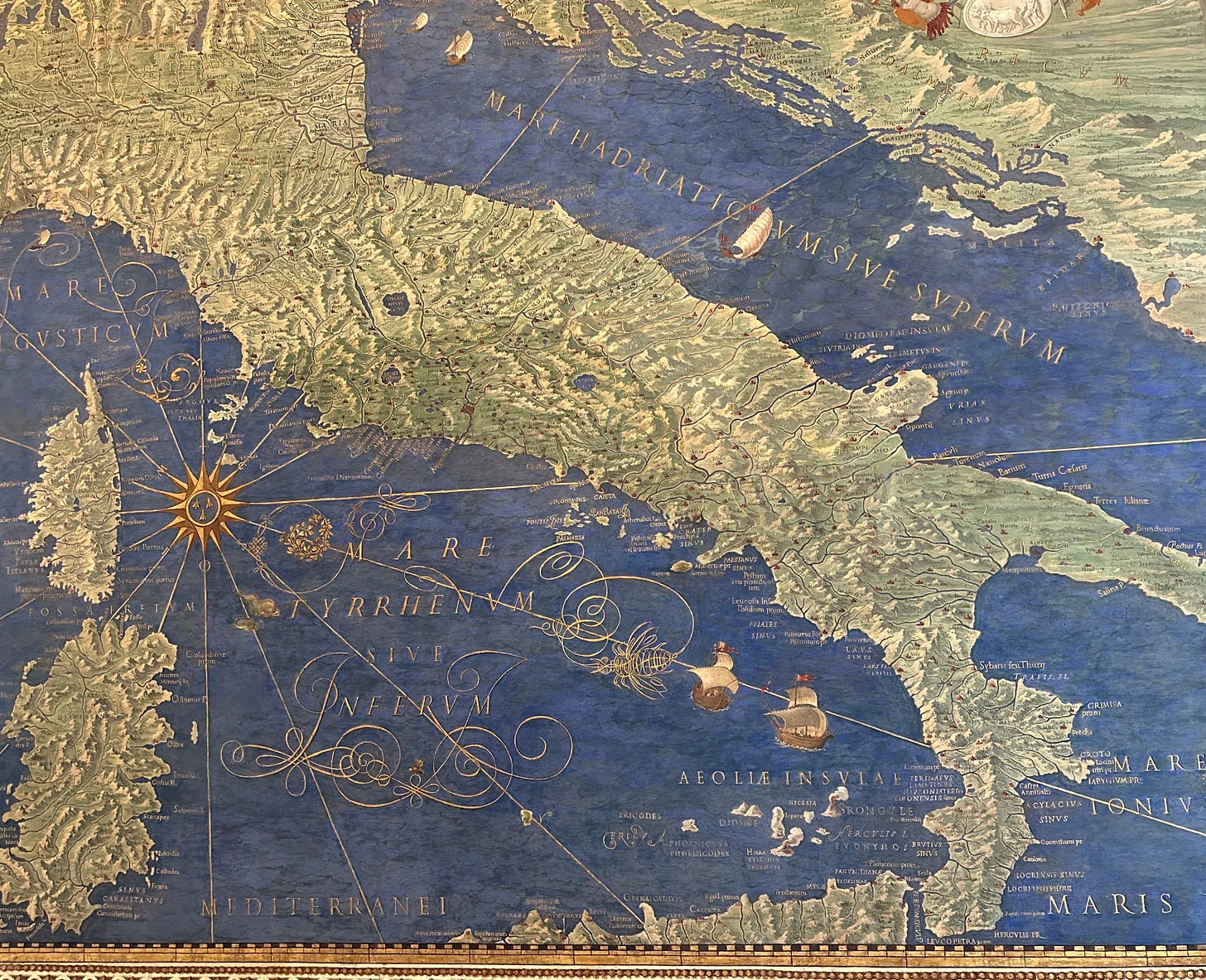
fascinating!!
What a fabulous, and wildly entertaining piece, Agnes! Thanks for sending this out today.